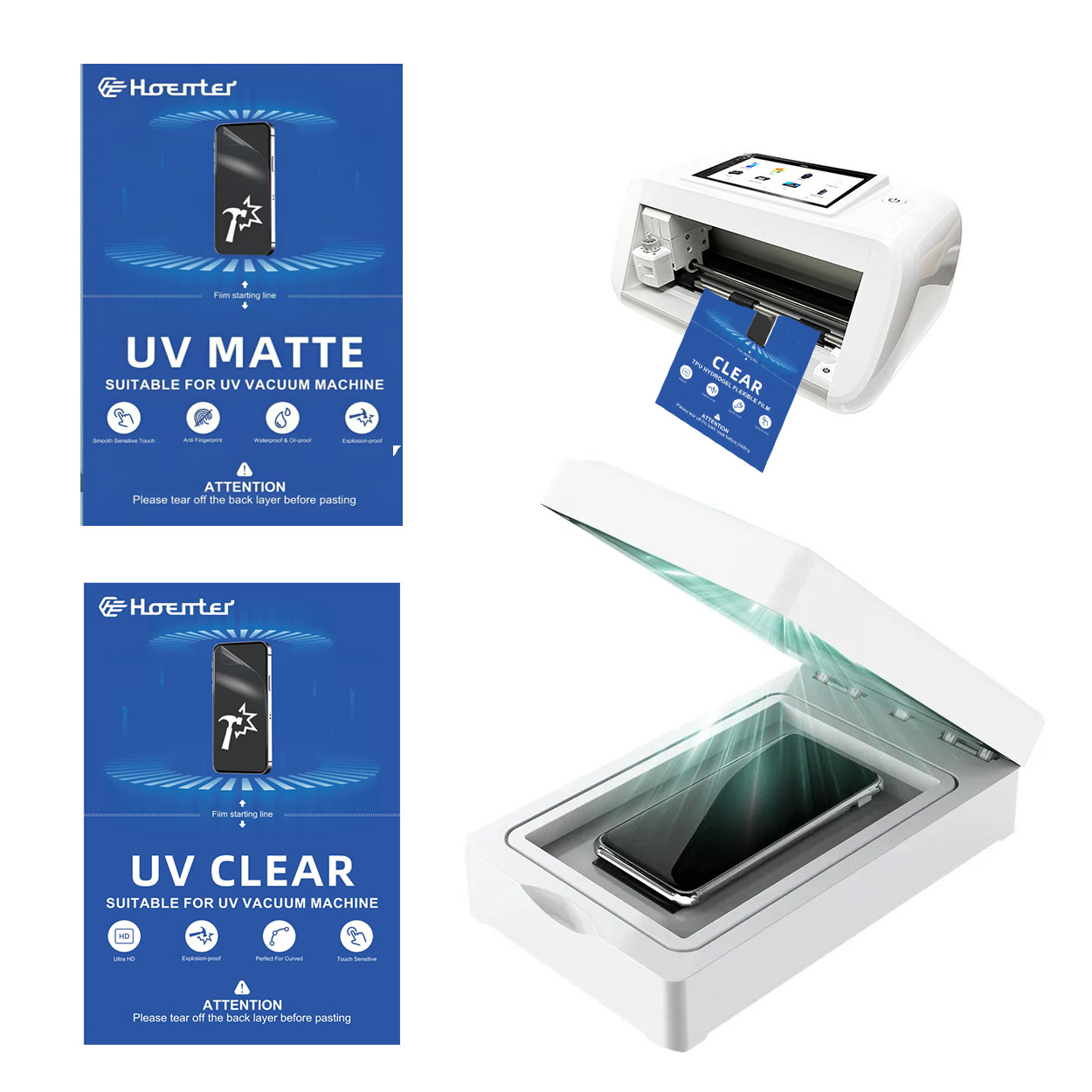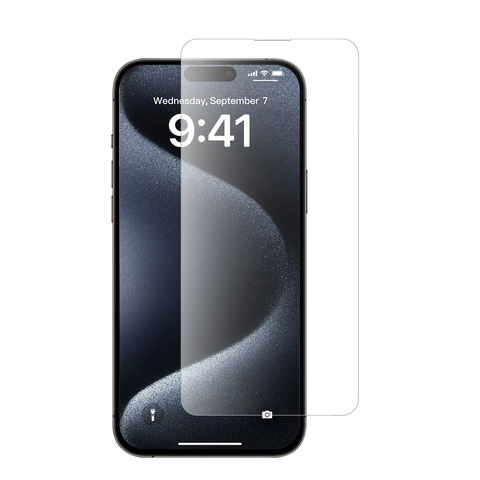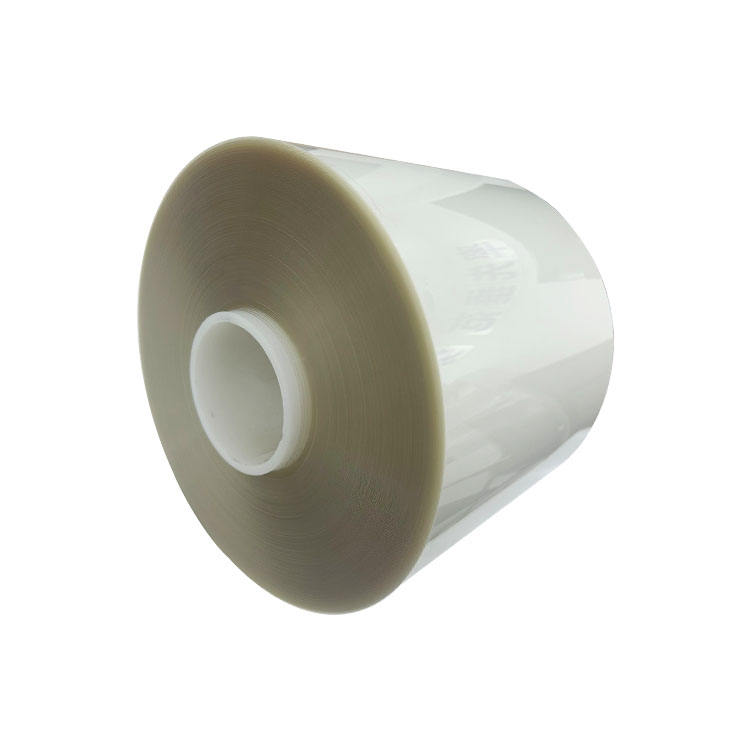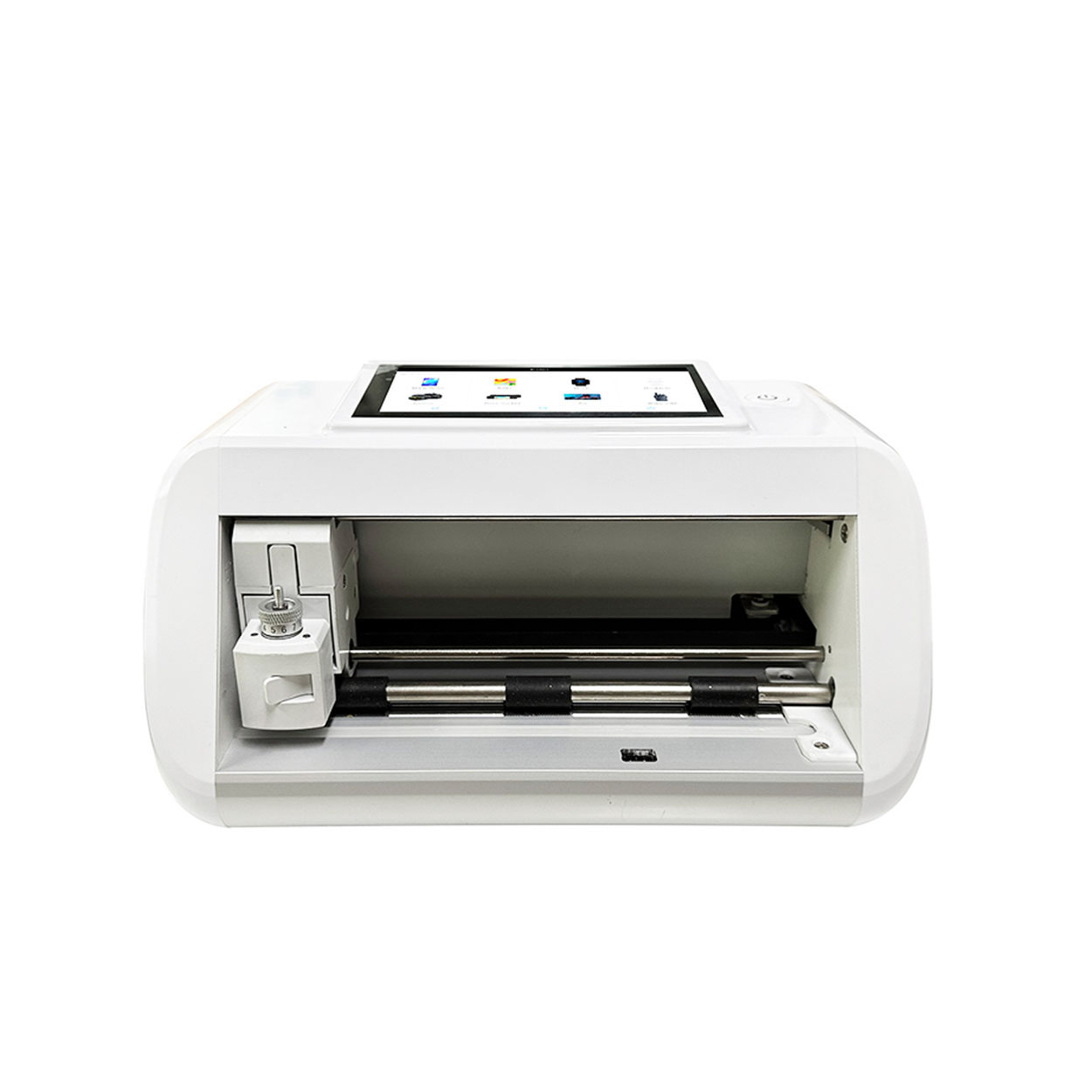
Characteristics of Mobile Phone Tempered Glass and Mobile Phone TPU Screen Protector
Table of Contents
Summary
Notable for their elasticity, transparency, and resistance to oil, grease, and abrasion, TPU screen protectors are particularly popular among smartphone users, especially those with curved screens. These protectors stand out due to their ability to cover the entire display, including edges and curves, which many other types of screen protectors cannot achieve. The key features of TPU screen protectors include their flexibility and self-healing properties. Unlike rigid screen protectors, TPU protectors are malleable, making them easy to apply to devices with various shapes and sizes. Their self-healing capability allows minor scratches and abrasions to disappear over time, maintaining a clear and smooth screen surface. This unique property is exemplified by products like the ArmorSuit MilitaryShield. Furthermore, TPU screen protectors offer excellent shock resistance, absorbing impacts and preventing cracks and scratches on the device’s screen.
However, TPU screen protectors do have their drawbacks. They are prone to discoloration when exposed to sunlight for extended periods and can accumulate oil residue from fingerprints, necessitating frequent cleaning. Despite these minor issues, their ability to provide robust protection without compromising touch sensitivity or screen clarity keeps them in high demand. Comparatively, TPU protectors offer better flexibility and scratch resistance than PET protectors and better coverage for curved screens than tempered glass protectors. In summary, TPU screen protectors are an excellent choice for users seeking comprehensive, flexible, and durable screen protection. Their self-healing properties, impact resistance, and ability to cover curved screens make them stand out in the market. While they may not match the hardness of tempered glass, their unique benefits ensure they remain a preferred option for many consumers.
Overview of TPU (Thermoplastic Polyurethane)
Thermoplastic Polyurethane (TPU) is a versatile elastomer that is fully thermoplastic, meaning it can be melted and reshaped multiple times without losing its original properties. Chemically, TPU is a block copolymer consisting of linear segmented segments of hard and soft blocks, formed through the reaction of diisocyanates with short-chain and long-chain diols.
Chemical Composition and Structure
TPU is synthesized through a polyaddition reaction involving diisocyanates and diols. This process creates a copolymer with distinct hard and soft segments. The hard segments provide TPU with its toughness and physical performance properties, while the soft segments contribute to its flexibility and elastomeric characteristics. The molecular structure can be fine-tuned by varying the ratio, structure, and molecular weight of the reaction components, allowing chemists to design TPUs with specific desired properties.
Properties
TPU materials are known for their unique combination of properties, making them suitable for various industrial applications. These properties include high elongation and tensile strength, excellent abrasion resistance, low-temperature performance, and high transparency. Additionally, TPUs exhibit good resistance to oil, grease, and various chemicals, making them durable in a range of environments. They also have excellent mechanical properties combined with rubber-like elasticity, which contributes to their wide applicability.
Applications
Due to its advantageous properties, TPU is used in diverse applications. Common uses include castor wheels, hoses and tubes, power tools, footwear, and sports equipment[9]. In the field of 3D printing, TPU is valued for its flexibility, durability, and chemical resistance, making it ideal for creating flexible parts that need to maintain their shape.
Properties of TPU Screen Protectors
Thermoplastic polyurethane (TPU) screen protectors are known for their unique and advantageous properties. As a type of flexible plastic protector, TPU combines elasticity, transparency, and resistance to oil, grease, and abrasion. These attributes make TPU screen protectors a popular choice for mobile devices, especially those with curved screens.
Flexibility and Self-Healing
One of the standout properties of TPU screen protectors is their flexibility. Unlike more rigid screen protectors, TPU is extremely malleable, making it easy to apply to screens with curves and edges. This flexibility also means that TPU screen protectors are highly compatible with a wide range of device shapes and sizes. Another key feature of TPU is its self-healing ability. Minor scratches and abrasions can automatically repair themselves, making the protector look virtually new over time. This property is exemplified by products like the ArmorSuit MilitaryShield, where fresh scratches can disappear overnight.
Durability and Impact Resistance
TPU screen protectors are designed to be durable and impact-resistant. The material is capable of absorbing shocks, which helps prevent cracks and scratches on the device’s screen. This makes TPU an excellent option for users looking for a screen protector that offers robust protection without compromising on touch sensitivity. While TPU is renowned for its scratch resistance and toughness, it is important to note that the quality can vary between different brands. Users are advised to conduct thorough research to choose a high-quality TPU screen protector, with popular options including Spigen and Rhinoshield.
Clarity and Touch Sensitivity
Transparency and screen clarity are crucial for a good user experience. TPU screen protectors offer high screen clarity, ensuring that the display remains bright and clear. Additionally, because TPU is thinner and more flexible, it does not interfere with the touch sensitivity of the device, allowing for smooth and responsive interactions. However, TPU protectors do have some downsides. They can discolor when exposed to sunlight for extended periods, and they tend to accumulate oil residue from fingerprints. Despite these drawbacks, their ability to cover the entire curved display of smartphones keeps them in high demand.
Comparison with Other Materials
When compared to other materials like PET or tempered glass, TPU offers several advantages. It is more elastic and transparent than PET, providing better scratch resistance and flexibility. While TPU might not offer the same level of hardness as tempered glass, it excels in covering curved screens and providing a self-healing surface.

Shock Resistance
Thermoplastic polyurethane (TPU) screen protectors are renowned for their excellent shock resistance, a characteristic that makes them highly effective in safeguarding electronic device screens from impact damage. The inherent properties of TPU, such as its flexibility, elasticity, and high impact strength, contribute significantly to its ability to absorb and dissipate shock energy.
Material Properties
TPU exhibits a degree of chain crosslinking and strong intermolecular interactions, which enhance its resistance to displacement or breakage when subjected to applied stresses[10]. This molecular structure allows TPU to display high impact strength and absorb substantial impact energies without failure. Furthermore, TPU’s flexibility and stretchability make it ideal for applications requiring parts to bend, twist, or deform without breaking or cracking.
Surface Tension and Viscosity Effects
Certain materials used in screen protectors, including TPU, exhibit unique properties such as surface tension and viscosity. These properties enable the material to absorb and disperse impact energy by deforming and flowing, effectively reducing the force transmitted to the screen. The viscous nature of TPU allows it to absorb and dissipate energy over time, providing a robust defense against impacts.
Testing and Evaluation
The effectiveness of TPU screen protectors in resisting shock is validated through standardized tests. These tests assess the ability of screen protectors to withstand impacts, ensuring they meet the required protection standards. Innovations in anti-shock technologies, such as air or gel-based cushioning systems, further enhance the impact resistance of screen protectors by creating protective layers that
dissipate energy and reduce the transmission of shocks to the device screen.
Practical Applications
TPU’s high impact resistance makes it suitable for various applications beyond screen protectors, including protective gear, cushioning, and flexible hinges. The material’s versatility and robustness allow it to maintain its integrity under significant forces, making it a preferred choice in environments where durability and shock absorption are critical.
Durability and Lifespan
TPU screen protectors are known for their remarkable durability and long lifespan due to several key properties of the material. Unlike rigid plastics like ABS and PLA, TPU can stretch up to five times its original length without breaking, allowing it to withstand repeated impacts and wear. This high degree of flexibility also enables TPU protectors to wrap around the edges of devices, providing comprehensive protection against scratches and minor impacts. One of the standout features of TPU is its excellent tear strength, which is significantly higher than that of more rigid plastics like PLA. This makes TPU molded parts less prone to cracking during service. Additionally, TPU’s excellent elasticity and high cohesive strength, enhanced by reinforced hydrogen bonding and van der Waals forces, afford it superior resistance to wear and tear [10]. Despite these advantages, TPU is not inherently biodegradable. However, ongoing research aims to develop biodegradable versions of TPU and explore recycling methods to mitigate its environmental impact. This is particularly important given TPU’s widespread use and the growing emphasis on sustainability. In terms of protection, TPU screen protectors offer a self-healing capability that minimizes the appearance of superficial scratches over time, ensuring a smooth and clear screen even with regular use. They also provide a certain level of impact absorption, which can protect screens from minor drops and bumps. While not as effective as tempered glass in high-impact situations, TPU protectors still offer a decent level of protection and maintain the natural touch sensitivity of devices, ensuring a seamless user experience.
Application and Installation
There are two primary methods for installing a screen protector: dry and wet. The method is typically specified on the packaging. While the process of installing a screen protector can be tedious and confusing, many people are hesitant to do it themselves, often opting to pay a “specialist” for installation. Manufacturers are aware of this and generally provide all necessary tools and detailed instructions to facilitate the process.
Dry Installation
The dry installation method relies on static electricity to adhere the protector to the screen, eliminating the need for adhesive and reducing the potential for mess. The process is straightforward but requires a dust-free environment, such as a bathroom after a shower, where steam has minimized airborne dust particles. First, the phone screen must be cleaned thoroughly. Most protectors include special wipes and stickers to remove any dust particles. It’s crucial to check the display under a bright light from different angles to ensure it is completely clean. Next, the screen protector should be carefully aligned with the display. Some protectors come with tools or stickers to aid in alignment. Once aligned, the plastic covering on the protector is peeled off, and the protector is placed on the phone. If it’s not perfectly aligned, it can be gently removed and repositioned. After placement, a soft cloth wrapped around the edge of a credit card or a similar
plastic tool is used to remove any air bubbles and ensure the protector adheres firmly to the display.
Wet Installation
Wet installation involves a similar process but requires applying a liquid adhesive before placing the protector on the display. Depending on the brand, this adhesive may come in a tiny spray bottle. The display or the protector (or both) is sprayed with the solution, and the protector is then adjusted until the fit is satisfactory. A provided squeegee is used to remove any bubbles and excess liquid between the display and the protector. Finally, a wipe on the top leaves a clean, smooth appearance. The wet method might seem intimidating, but it is not significantly more difficult than the dry method. The advantage is often a more secure attachment to the screen, which can be beneficial for certain types of protectors.
Practical Tips
When choosing a screen protector, consider whether a second protector is included in case the first attempt fails, and ensure you have enough adhesive for multiple applications if using the wet method. It’s also important to check if the adhesive from a liquid or low-quality protector will leave a residue on your screen, potentially requiring a screen replacement if removed. For those apprehensive about the process, watching video tutorials or seeking professional help can be beneficial. Most modern screen protectors come with alignment
tools and detailed instructions to simplify installation, ensuring a bubble-free and seamless application.
Pros and Cons
Thermoplastic polyurethane (TPU) screen protectors are a popular choice among smartphone users due to their unique properties and benefits. However, like any other product, they come with their own set of advantages and disadvantages.
Pros
Edge-to-Edge Protection: One of the most significant benefits of TPU screen protectors is their ability to provide edge-to-edge protection, especially on curved phones. This ensures that the entire display is covered, offering comprehensive protection against scratches and minor impacts.
Flexibility and Ease of Installation: TPU protectors are known for their flexibility, making them easier to apply and remove compared to other types of screen protectors like tempered glass.Their flexible nature allows them to conform better to the contours of the device.
Shock Resistance: The material’s elasticity enables it to absorb non-violent impacts, such asdrops and lighter scratches, while retaining its original composition. This makes TPU screenprotectors effective in providing shock resistance from everyday mishaps.
Self-Healing Properties: TPU has self-healing properties that allow minor scratches and scuffs todisappear over time, maintaining a clearer screen surface for a longer period.
Cons
Prone to Discoloration: TPU screen protectors are susceptible to discoloration when exposed to sunlight. This yellowing effect is a result of natural degradation and is irreversible. Despite this discoloration, it does not affect the durability of the protector.
Oil Accumulation: Another downside is that TPU protectors tend to accumulate oil residue from the user’s fingertips, which can make the screen appear smudged and require frequent cleaning.
Cosmetic Considerations: While TPU protectors are excellent for edge-to-edge coverage, they might not be the best choice if the primary concern is the cosmetic appearance of the device. Folthose prioritizing a clearer view and a smoother touch, tempered glass protectors might be abetter option.
Consumer Reviews and Feedback
When considering the purchase of a screen protector, consumer reviews play a pivotal role in determining the quality and reliability of the product. Positive feedback often indicates that a screen protector is effective and durable, while negative reviews can signal potential issues.
Importance of Reviews
Reviews are a critical factor in the decision-making process for many consumers. A screen protector that consistently receives poor reviews is likely not worth investing in. Conversely, even one or two positive reviews can suggest that a product may be worth considering[20]. For instance, a product like the Spigen iPhone 15 Screen Protector EZ FIT GLAS.tR, which is highly rated online, indicates a higher likelihood of customer satisfaction.
Common Feedback on TPU Screen Protectors
Thermoplastic polyurethane (TPU) screen protectors are known for their durability and flexibility. Consumer feedback generally highlights these attributes, noting that TPU protectors offer excellent shock resistance and are suitable for a variety of devices. Users appreciate the combination of the best features of plastic and rubber, which make TPU screen protectors both long-lasting and adaptable. However, it’s also essential to pay attention to the specific experiences shared by users. For example, a common sentiment is the superior impact protection provided by TPU screen protectors, which helps in preventing screen damage during accidental drops. Additionally, users often commend the ease of installation and the clarity of the screen once the protector is applied.

Comments

How to Get Rid of Air Bubbles in Screen Protector?
By following these guidelines, you can ensure your screen protector is applied correctly and remains bubble-free, enhancing both the appearance and functionality of your device.

How to Clean Screen Protector Sticky Side?
By following these steps, you can extend the life of your screen protector and keep your device looking brand new. Happy cleaning!

Matte and Clear Self-Healing EPU
Matte and Clear EPU Film: The ultimate choice in self-healing screen protection. Find the perfect finish for your phone.

Are Phone Cases with Built-In Screen Protectors Good?
Built-in screen protectors save time and effort with all-in-one protection.

HD Hydrogel Screen Protector For Film Cutting Machine
The HD Hydrogel Screen Protector is an innovative solution that offers protection without compromising the ultra clarity of your HD screen. This article will explore the features, benefits, and installation process of this revolutionary product, ensuring you make an informed choice for your beloved device.
Tags
Find All knowledge and trends from our blog, get the wholesale price and best quality from our factory.

What Film Cutting Machine and Its Application
Film cutting machines have played a crucial role in the evolution of filmmaking and various industrial processes by enabling precise cutting and splicing of film materials.

What Is a Screen Protector Cutting Machine?
A screen protector cutting machine is a specialized device designed to produce custom-fit screen protectors for various electronic devices, including smartphones, tablets, smartwatches, laptops, and monitors.

How Mobile Phone Screen Protector Cutting Machine Work?
A mobile phone screen protector cutting machine is a sophisticated device designed
to produce customized screen protectors for various digital devices with high preci
sion and efficiency.

Characteristics of Mobile Phone Tempered Glass and Mobile Phone TPU Screen Protector
Thermoplastic polyurethane (TPU) screen protectors are flexible, durable, and
self-healing plastic films designed to protect electronic device screens from
scratches, impacts, and other potential damages.

Revolutionize Device Protection with Screen Guard Cutting Machine
Whether you possess a smartphone, tablet, or smartwatch, this versatile machine accommodates a vast array of devices. It seamlessly adapts to the dimensions of your gadget, offering a custom fit that generic protectors can’t match.

Screen Protector Lifetime Warranty
A screen protector lifetime warranty is a guarantee provided by manufacturers that
promises to repair or replace a screen protector for the lifetime of the product, under specific terms and conditions.






